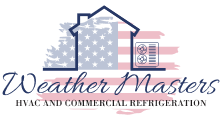After a major cleaning project, it’s easy to think the job is done. But keeping a space fresh and functional takes more than a single cleanup. We maintain lasting results by using the right post-cleaning support and maintenance strategies.

We focus on practical steps that protect surfaces, prevent buildup, and extend the life of our cleaning efforts. This includes regular upkeep, safe tools, and smart scheduling that keep spaces looking their best without wasting time or resources.
By understanding how to manage maintenance after post-construction cleaning and when to seek professional support, we create a cleaner, safer environment that stays that way.
Essential Post-Cleaning Support Strategies

We maintain clean spaces by setting clear routines, recording each step, and assigning accountability. These actions help us sustain results, reduce confusion, and ensure that every cleaning task meets consistent standards.
Establishing a Cleaning Schedule
A cleaning schedule keeps tasks organized and prevents buildup of dirt or clutter. We set specific times for daily, weekly, and monthly cleaning so no area is overlooked.
We review the schedule often to adjust for seasonal needs or increased activity. For example, entryways may need more frequent cleaning during rainy months.
When using a professional cleaning service, we align their visits with our internal schedule. This coordination avoids overlap and ensures continuous coverage.
| Frequency | Task Example | Responsible Party |
|---|---|---|
| Daily | Wipe surfaces | Staff |
| Weekly | Vacuum carpets | Cleaning service |
| Monthly | Deep clean restrooms | Maintenance team |
A clear schedule helps us track progress and identify missed tasks quickly.
Documenting Cleaning Procedures
We document each cleaning procedure to standardize how tasks are done. Written instructions reduce errors and make training easier for new staff.
Each document should include materials used, safety steps, and expected results. For example, we note which disinfectants are safe for certain surfaces and how long they should remain before wiping.
Keeping these records in a shared digital folder ensures access for everyone. When we hire a professional cleaning service, we share these documents so their methods align with ours.
We update the documents whenever products, tools, or regulations change. This keeps our procedures accurate and compliant with health standards.
Assigning Roles and Responsibilities
We assign specific cleaning roles to make sure every area is maintained. Clear responsibilities prevent overlap and help us track accountability.
Each person or team should know their assigned zones and tasks. We post a simple chart that lists who cleans what and when.
When using a professional cleaning service, we define their scope in writing. This avoids confusion about which duties remain with our staff.
Regular check-ins help confirm that everyone follows the plan. If issues appear, we adjust roles or provide extra training to maintain quality.
Maintenance Best Practices After Post-Construction Cleaning

We maintain a clean and safe space by managing dust, keeping surfaces clear, and disposing of leftover debris correctly. Regular attention to these tasks helps protect finishes, improve air quality, and extend the results of post-construction cleaning.
Routine Dusting and Vacuuming
Dust continues to settle for weeks after construction ends. We reduce buildup by dusting surfaces at least twice a week with microfiber cloths that trap fine particles instead of spreading them.
We vacuum floors, baseboards, and vents using a machine with a HEPA filter to capture small dust particles and allergens. It’s important to move furniture and reach corners where dust collects.
We also check air vents and filters monthly. Replacing or cleaning filters prevents dust from circulating again. Keeping a schedule for dusting and vacuuming ensures consistent results and protects our cleaned surfaces.
Ongoing Glass and Surface Care
Glass panels, mirrors, and windows show smudges easily. We clean them with a non-abrasive glass cleaner and a lint-free microfiber cloth to avoid streaks. Wiping in a circular motion helps remove residue without scratching the surface.
For countertops, fixtures, and cabinets, we use mild cleaners suited to each material. For example:
| Surface Type | Recommended Cleaner | Cleaning Tool |
|---|---|---|
| Glass | Ammonia-free glass cleaner | Microfiber cloth |
| Stainless steel | pH-neutral cleaner | Soft cloth |
| Painted wood | Mild soap and water | Damp microfiber cloth |
We avoid harsh chemicals that can dull finishes or damage sealants. Regular surface care keeps materials looking new and prevents buildup that can attract dust or grime.
Debris Removal and Waste Management
After cleaning, small debris or leftover materials can remain hidden in corners or behind fixtures. We inspect these areas carefully and remove any nails, screws, or scraps using gloves and proper tools.
We separate waste into recyclable, non-recyclable, and hazardous categories. Proper disposal prevents safety hazards and supports environmental compliance.
We also maintain labeled bins for ongoing waste collection. Emptying them regularly keeps the space organized and reduces the chance of debris spreading back into cleaned areas. Consistent debris removal helps maintain a tidy and safe environment long after construction cleanup.
Professional Support and Service Considerations
We must assess the quality, cost, and long-term value of professional cleaning support after construction. Clear evaluation helps us maintain a safe, organized, and well-kept environment that meets both operational and appearance standards.
Choosing Post-Construction Cleaning Services
Selecting the right post-construction cleaning service requires checking qualifications, safety standards, and scope of work. We should confirm that the company has experience handling debris removal, surface detailing, and fine dust control.
It helps to ask for documentation such as insurance, safety certifications, and training records. These details show the company’s ability to work safely and efficiently in newly built spaces.
We can compare service packages that include:
- Rough cleaning: removal of large debris and waste
- Detail cleaning: wiping walls, fixtures, and surfaces
- Final cleaning: polishing floors and preparing spaces for use
We should also verify if the company uses eco-friendly products and proper disposal methods. This ensures compliance with local regulations and reduces environmental impact.
Evaluating Post-Construction Cleaning Cost
The post-construction cleaning cost depends on several measurable factors such as building size, material type, and service level. We should ask for itemized quotes to see how labor, supplies, and equipment affect pricing.
A sample cost table can help us compare options:
| Service Type | Typical Range (per sq. ft.) | Inclusions |
|---|---|---|
| Basic Cleaning | $0.10-$0.25 | Debris removal, sweeping |
| Standard Cleaning | $0.25-$0.50 | Surface dusting, window cleaning |
| Deep Cleaning | $0.50-$1.00+ | Floor polishing, fixture detailing |
We should also check if the provider charges extra for specialty surfaces like marble or glass. Transparent pricing helps us plan budgets and avoid unexpected expenses.
Benefits of Professional Maintenance Programs
A professional cleaning service that offers ongoing maintenance helps us extend the life of materials and reduce future repair costs. Regular cleaning prevents buildup that can damage finishes and surfaces.
Maintenance programs often include scheduled inspections, consistent cleaning routines, and emergency support. These services keep facilities safe for occupants and ready for daily use.
We can request customized maintenance plans based on traffic levels, building type, and usage patterns. This approach ensures that cleaning remains efficient and cost-effective over time.
Safety, Tools, and Techniques for Effective Maintenance
We maintain safe and effective cleaning practices by using proper protective gear, applying the right cleaning methods, and selecting tools that match the task. Each step reduces risk, improves results, and extends the lifespan of surfaces and equipment.
Utilizing Proper PPE
We always start by wearing personal protective equipment (PPE) suited to the task. Gloves protect our hands from harsh chemicals and sharp edges. Safety glasses or face shields prevent splashes from reaching our eyes. When working in dusty or enclosed areas, we use masks or respirators to avoid inhaling particles.
Proper footwear with non-slip soles helps prevent falls on wet floors. We also wear long sleeves or coveralls when handling cleaning agents that can irritate skin.
We inspect PPE before each use. Torn gloves or cracked goggles can fail when we need them most. After cleaning, we store gear in a dry, ventilated area to prevent contamination or damage. Using the correct PPE keeps us safe and ensures we can work efficiently without interruption.
Selecting Appropriate Cleaning Techniques
We choose cleaning techniques based on surface type, soil level, and safety requirements. For example, we use a damp-wipe method for hard surfaces to capture dust instead of spreading it. On delicate materials, we use mild detergents and soft cloths to avoid scratches.
A simple approach helps maintain consistency.
- Dry cleaning: Removes loose debris with brushes or vacuums.
- Wet cleaning: Uses water or solutions for deeper cleaning.
- Disinfection: Targets germs using approved sanitizers.
We always follow manufacturer instructions for cleaning agents to avoid surface damage. Testing a small, hidden area first helps confirm compatibility. By matching the right technique to the surface, we reduce rework and preserve the quality of the cleaned area.
Leveraging the Right Equipment and Materials
We rely on the right tools to achieve effective maintenance. Microfiber cloths are essential because they trap dirt and absorb liquids better than cotton rags. They also reduce the need for harsh chemicals. For larger areas, we use mops with replaceable heads and adjustable handles to improve reach and comfort.
Vacuum cleaners with HEPA filters help remove fine dust and allergens. For precision work, we use small brushes or compressed air to clean corners and vents.
We keep a simple table of common tools and their uses:
| Tool | Purpose | Key Benefit |
|---|---|---|
| Microfiber cloth | Dusting, wiping | High absorption, reusable |
| HEPA vacuum | Floor and air cleaning | Captures fine particles |
| Adjustable mop | Floor maintenance | Reduces strain, improves reach |
By maintaining clean, functional tools, we ensure consistent results and reduce wear on surfaces over time.




